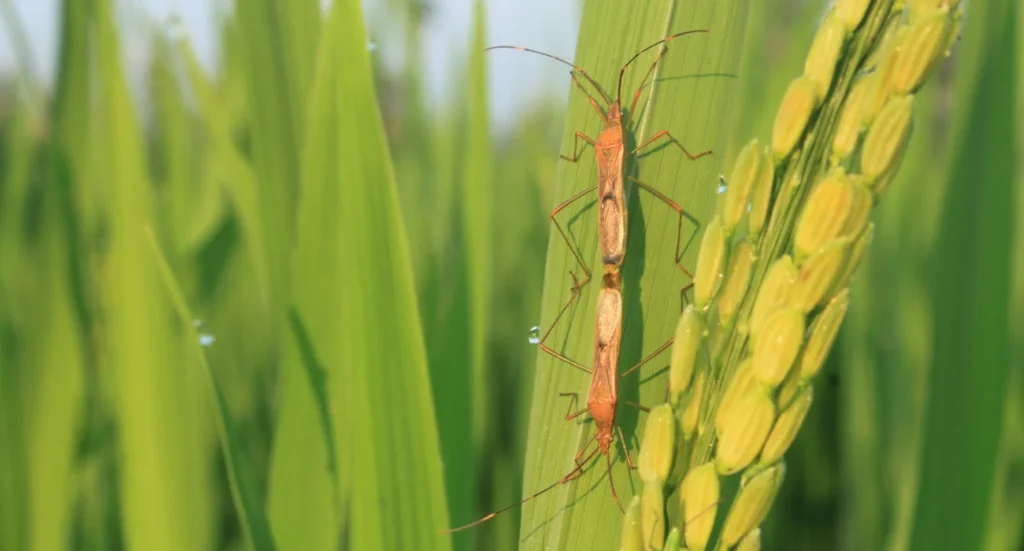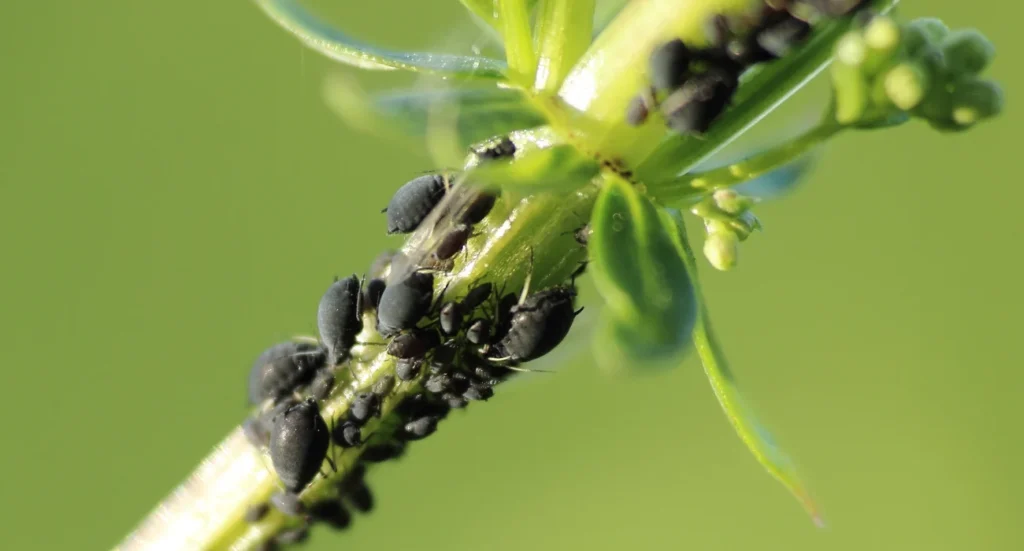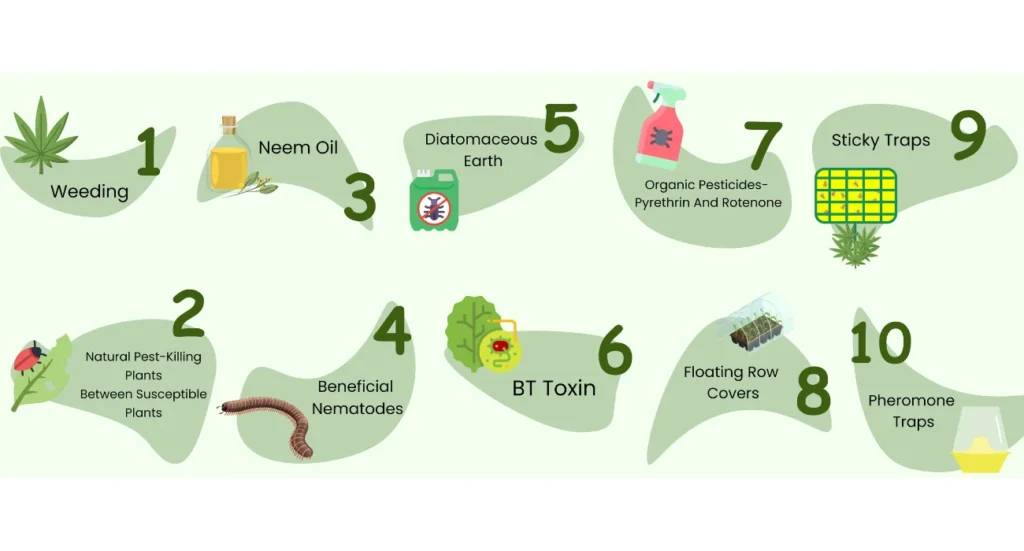When I first started my journey into organic gardening, I thought I had all the answers. Armed with natural sprays and a determination to eliminate every bug in sight, I was ready to wage war on garden pests. What happened next completely changed my perspective on organic pest control forever.
My carefully planned attack backfired spectacularly. The harder I fought against nature, the worse my pest problems became. It wasn’t until I discovered the fundamental truths about organic pest management that everything clicked into place.
Why Traditional Thinking About Garden Pests Is Completely Wrong
Most gardeners approach pest control with the same mindset they’d use to clean their house – find the problem, eliminate it completely, and move on. This approach might work for dust bunnies, but it’s a disaster when applied to living ecosystems.
The truth is, organic pest control isn’t about winning a war against insects. It’s about creating harmony in your garden where every creature has its place and purpose. This shift in perspective changes everything about how we manage our outdoor spaces.
The First Dangerous Myth: Complete Pest Elimination
Why “Getting Rid” of Pests Destroys Your Garden

The most destructive misconception in organic gardening is believing we need to completely eliminate pest species from our gardens. This approach ignores a fundamental ecological principle: every organism plays a role in maintaining natural balance.
Organic pest control experts understand that even troublesome insects serve important functions. They pollinate plants, break down organic matter, and provide food for beneficial predators. When we remove them entirely, we create ecological gaps that nature will fill – often with even more problematic species.
Think of your garden as a complex web where each strand supports the others. Remove too many strands, and the entire structure becomes unstable. This instability often manifests as sudden population explosions of remaining pest species.
The Boomerang Effect of Pest Eradication
Here’s what typically happens when gardeners successfully eliminate a pest species:
First, the immediate problem disappears, creating a false sense of victory. However, this creates an ecological vacuum that attracts new colonizers. Without established predator populations to keep newcomers in check, these replacement pests often multiply rapidly.
The result? A pest problem that’s often worse than the original issue. This cycle of escalation drives many gardeners to use increasingly harsh methods, moving them further away from sustainable organic pest management.
The Second Costly Mistake: Organic Doesn’t Mean Harmless
The Organic Pesticide Trap
Beginning organic gardeners often fall into the trap of simply substituting natural pesticides for synthetic ones. While this represents an improvement in terms of environmental impact, it completely misses the point of true organic pest control.
Natural pest control products can still cause significant ecological disruption. They may kill beneficial insects alongside target pests, disrupt soil microorganisms, or create resistance problems over time. Most importantly, they don’t address the underlying conditions that allowed pest problems to develop.
When Organic Solutions Backfire
Even organically approved pesticides should be considered emergency measures, not standard practice. Overuse of any pesticide – natural or synthetic – can trigger what entomologists call “pest resurgence,” where target populations bounce back stronger than before.
This happens because pesticides often eliminate natural predators more effectively than they eliminate pests. Predators typically reproduce more slowly and are more susceptible to chemical disruption, creating perfect conditions for pest population explosions.
The Third Critical Error: Tunnel Vision Problem Solving
Why Isolated Solutions Fail
The biggest barrier to effective organic pest control is approaching each problem in isolation. This reactive mindset focuses on symptoms rather than causes, leading to an endless cycle of pest management crises.
Successful organic gardening requires understanding that pest problems are usually indicators of broader ecological imbalances. These imbalances might involve soil health, plant selection, watering practices, or biodiversity levels.
The Holistic Approach That Actually Works
True organic pest management begins long before pests appear. It starts with creating conditions that naturally discourage pest problems while supporting beneficial organisms. This proactive approach involves:
Plant Health Optimization: Healthy plants naturally resist pest attacks more effectively than stressed specimens. This means selecting appropriate varieties for your climate, providing optimal growing conditions, and maintaining proper nutrition.
Biodiversity Enhancement: Diverse ecosystems are inherently more stable and resistant to pest outbreaks. By encouraging a wide variety of plants and animals in your garden, you create natural checks and balances that prevent any single species from becoming problematic.
Companion Planting Strategies: Certain plant combinations naturally repel pests, attract beneficial insects, or mask the scents that draw problematic species. These relationships, developed over millions of years of evolution, provide elegant solutions to common garden challenges.
Building Your Natural Defense System
The Power of Beneficial Insects

The most effective organic pest control strategy involves recruiting nature’s own pest management team. Beneficial insects like ladybugs, lacewings, parasitic wasps, and predatory mites can control pest populations far more effectively than any spray.
Creating habitat for these allies requires providing diverse food sources, shelter, and overwintering sites. This might involve planting flowering herbs, maintaining small brush piles, or leaving some garden areas slightly wild.
Strategic Plant Selection
Some plants act as natural pest deterrents while others serve as “trap crops” that concentrate pests in manageable areas. Understanding these relationships allows you to design pest management directly into your garden layout.
For example, marigolds don’t just add color – they release compounds that many pest insects find repulsive. Similarly, nasturtiums can draw aphids away from more valuable crops, making pest management much simpler.
Practical Implementation Strategies
Starting Your Organic Transformation
Transitioning to effective organic pest control doesn’t happen overnight. Begin by observing your garden’s existing ecosystem and identifying the beneficial organisms already present. Build your management strategy around supporting and expanding these natural allies.
Focus on soil health as your foundation. Healthy soil supports healthy plants, which resist pest attacks more effectively. This might involve adding organic matter, improving drainage, or adjusting pH levels based on your specific conditions.
Monitoring and Adaptation
Successful organic gardening requires ongoing observation and adjustment. Regular garden walks help you identify potential problems before they become serious, allowing for gentle interventions rather than emergency responses.
Keep simple records of what works in your specific conditions. Organic pest management strategies that succeed in one location might need modification for different climates, soil types, or plant selections.
The Long-Term Vision
Creating Sustainable Balance

The ultimate goal of organic pest control isn’t eliminating all garden challenges – it’s creating a resilient ecosystem that can handle normal fluctuations without requiring constant intervention. This approach takes time to develop but creates lasting benefits that extend far beyond pest management.
Mature organic gardens often experience fewer serious pest problems than conventional gardens because they’ve achieved natural balance. When problems do occur, they’re typically minor and resolve quickly through natural processes.
Your Role as Garden Steward
Embracing true organic pest management means shifting from the role of warrior to steward. Instead of fighting against nature, you work with natural processes to create the conditions where your plants can thrive while maintaining ecological balance.
This approach requires patience and observation, but it rewards gardeners with lower maintenance requirements, reduced costs, and the satisfaction of working in harmony with nature.
Key Takeaways for Organic Success
Understanding these fundamental principles transforms how you approach organic pest control:
- Pests serve important ecological functions and shouldn’t be completely eliminated
- Natural pesticides should be emergency measures, not routine solutions
- Effective pest management requires addressing underlying causes, not just symptoms
- Healthy plants in balanced ecosystems naturally resist serious pest problems
- Biodiversity is your best defense against pest outbreaks
- Patience and observation are more valuable than quick fixes
Frequently Asked Questions
Q: How long does it take to see results from organic pest control methods?
A: Organic pest management typically shows initial improvements within 4-6 weeks, but full ecosystem balance can take 1-2 growing seasons to establish. The timeline depends on your starting conditions and the specific methods employed.
Q: What should I do if organic methods aren’t controlling a serious pest outbreak?
A: For severe infestations, targeted organic pest control products can be used as emergency measures. Focus on the least disruptive options first, then address underlying conditions to prevent recurrence.
Q: Can organic pest control work in small urban gardens?
A: Absolutely! Organic gardening principles scale down effectively. Even container gardens benefit from companion planting, beneficial insect habitat, and plant health optimization strategies.

